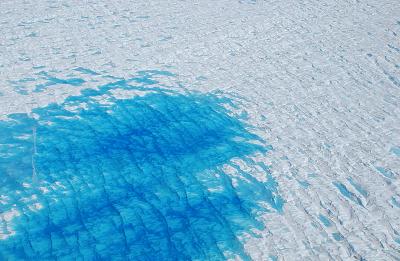Explaining Recent Changes in Arctic Sunlight Reflectivity
Some of the most dramatic environmental changes on the planet are visible in the Arctic, where temperature increases are 3 to 4 times larger than elsewhere on the planet and sea ice expanse and thickness are decreasing rapidly. These changes not only are important in polar regions but also affect weather and the environment at lower latitudes. The Arctic changes relate directly to sea ice and snow cover, because snow/ice cover insulates the surface, preventing exchanges of heat and moisture, and because the reflection of sunlight back to space is dramatically different over the relatively bright ice and snow surface compared to the darker ocean or land. The sunlight reflection is measured by a quantity called albedo that is small when the surface absorbs all the sunlight and large when it reflects all sunlight back to space. Arctic surface albedo has been decreasing over the last 3 decades but the reasons for the decrease have not been well understood. Reductions in snow cover, ice extent, and reflectivity due to surface changes (such as lower amounts of snow cover, increases in darker melt ponds, and the addition of light-absorbing particle deposits on the surface) have been explored as potential causes of the albedo reduction observed since the early 1980s. Researchers at the U.S. Department of Energy’s Pacific Northwest National Laboratory led a study to explain and quantify reasons for the Arctic surface albedo reduction.
The study found that snow cover decreases (over land and sea ice) account for about 70% of the satellite-observed reduction in Arctic surface albedo since the 1980s. The snow cover decreases are caused by a warmer surface and an increasing fraction of precipitation appearing as rain, rather than snow. The retreat in sea ice extent is also a contributing factor to albedo reduction where its primary role in regulating heat and moisture exchanges is also reduced. Researchers found that soot deposits do not appear to be an important driver of Arctic surface albedo reduction as the magnitude of heating is relatively small and the deposits have been declining since the 1980s.
As the Arctic warms, the retreat of snow and ice together with the associated feedbacks can lead to a decrease of surface albedo, increasing the Sun’s ability to heat the surface and further decreasing the snow and ice area. In this study, researchers used satellite observations to document a 1.25 to1.51% per decade absolute reduction in the Arctic mean surface albedo in spring and summer between 1982-2014. This declining trend was also found in three other observationally based estimates of albedo and the signal was also reproduced by the team in the Community Atmosphere Model (CAM5) for global climate evaluations. The team then used the CAM5 model results to identify and quantify the relative contributions of changes in terrestrial snow cover, snow cover on sea ice, and sea ice cover to the declining Arctic surface albedo, showing the three factors to play nearly equally important roles of influence. The study also found that snow cover changes on sea ice were very important in reducing Arctic surface albedo, and they showed that although the amount of precipitation reaching the surface is going up in the Arctic, more of it falls as rain, rather than snow, decreasing sunlight reflectivity with additional consequences to sea ice extent and persistence. The declining trends in soot deposition on snow and its relatively weak influence on snowmelt during the 1980-2014 span of the study suggest that this process is unlikely to have been the driver for the decrease in Arctic surface albedo.

